As RAGBRAI grows from lark to legendary at age 50, it still offers glimpses of 'authentic Iowa'
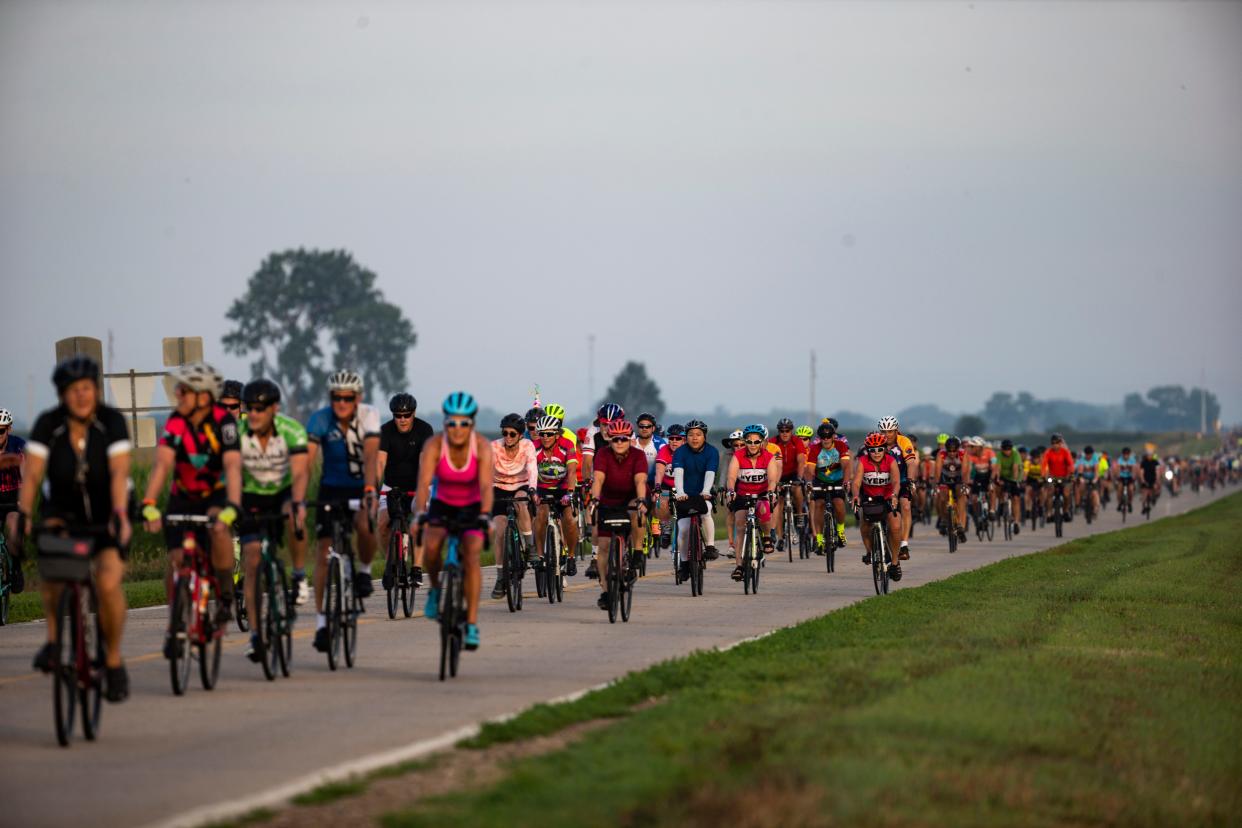
- Oops!Something went wrong.Please try again later.
SIOUX CITY — In 1973, Des Moines Register journalists John Karras and Donald Kaul set out from this Missouri River city on a journey that would become as much a part of Iowa as the fields, farms and small towns it passed through along the way.
But when they pedaled out of a downtown motel parking lot, accompanied by 200 of their readers, they had no idea that the Des Moines Register promotion dubbed The Great Six-Day Bike Trip would set the stage for what, in its 50th year, is now the world's largest annual bicycle tour.
The 460-mile trip to Davenport, dreamed up as a Register promotion, was haphazardly planned ― "truly stupid," as Karras would later recall it. The route hadn't been scouted. There was no signage, no provision for traffic control or medical emergencies. And unsure how many people would respond to the invitation to ride along, Karras and Kaul had made no arrangements for sanitation or camping.
But a second ride followed, and by the third edition in 1975, it became the Register's Annual Great Bicycle Ride Across Iowa, a seven-day tour from the Missouri to the Mississippi.
It will mark its 50th year with a Sioux City-to-Davenport ride beginning Sunday.
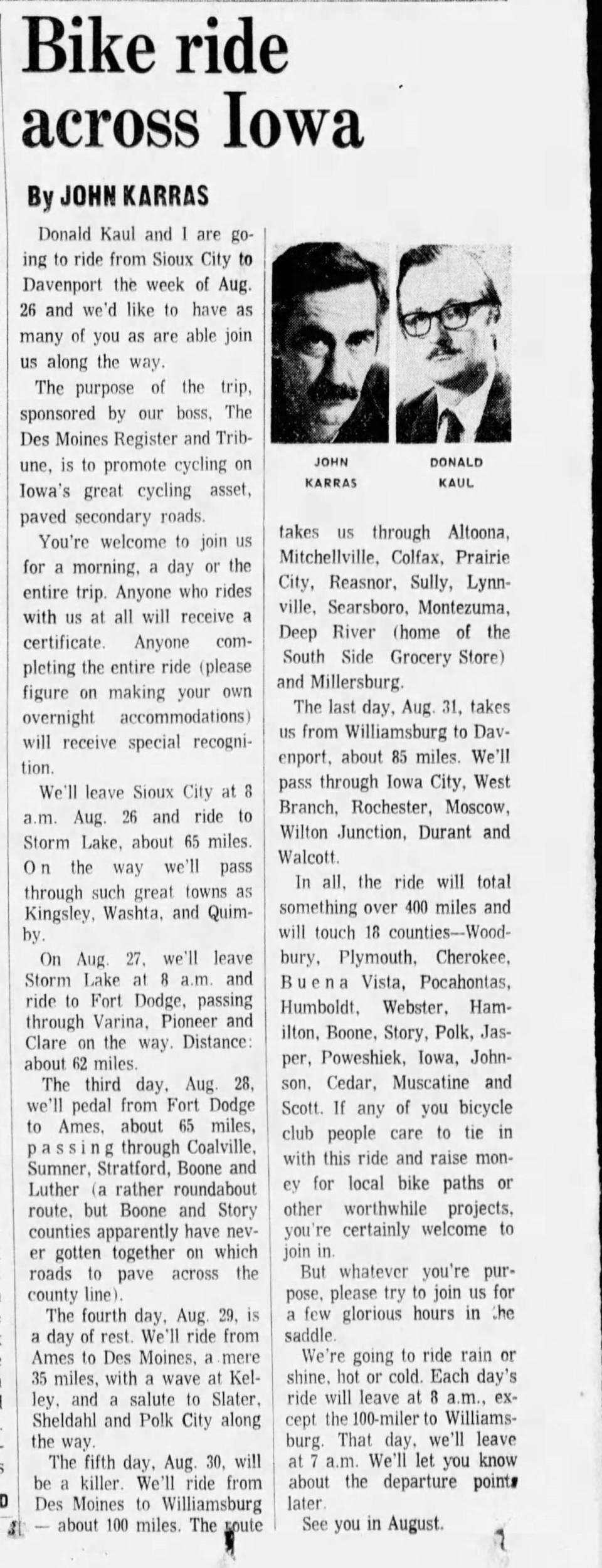
"What we had envisioned was a rather modest bicycle ride," Karras wrote in 1992, marveling at the tenacity of the ride he and Kaul jokingly referred to as a "life sentence," and which in fact outlived them. "I've seen a couple of generations of teenagers grow up, have met literally thousands of pretty nice people and have formed a couple of dozen lifetime friendships, all through cycling."
Starting the first organized bike ride across Iowa
A look back: Photos show 1973 ride that spawned RAGBRAI
The Register wasn't the first newspaper to launch what would become a major ride. France's L’Auto in 1903 created the Tour de France, now long established as the world's premier bicycle race.
The goal was to sell papers. That also was the motive 70 years later, when the Register agreed to pay the tab for cycling enthusiasts Karras and Kaul to ride across Iowa and write about their experiences along the way.
“It’s the best newspaper promotion since William Randolph Hearst started the Spanish-American War,” Karras joked in a 1993 promotional video.
Long-distance recreational cycling was still rare in the United States when the pair began exploring Iowa's backroads. At Karras’ insistence, Kaul bought a three-speed bike. Then he sold it at a loss and bought a used 10-speed that was better suited to climbing the surprisingly steep Iowa hills.
More: A pilgrimage home, a culinary adventure: Why these cyclists are doing their first RAGBRAI
“Within weeks I was hooked, hopelessly hooked,” Kaul wrote in 1973. “Since then, it is fair to say biking has become one of the overriding passions of my life. What Salvation has done for Billy Graham, what Positive Thinking has done for Norman Vincent Peale, what George McGovern did for Richard Nixon ― biking has done for me.”
Des Moines City Council member Carl Voss was a 24-year-old Register photographer when he covered that initial ride.
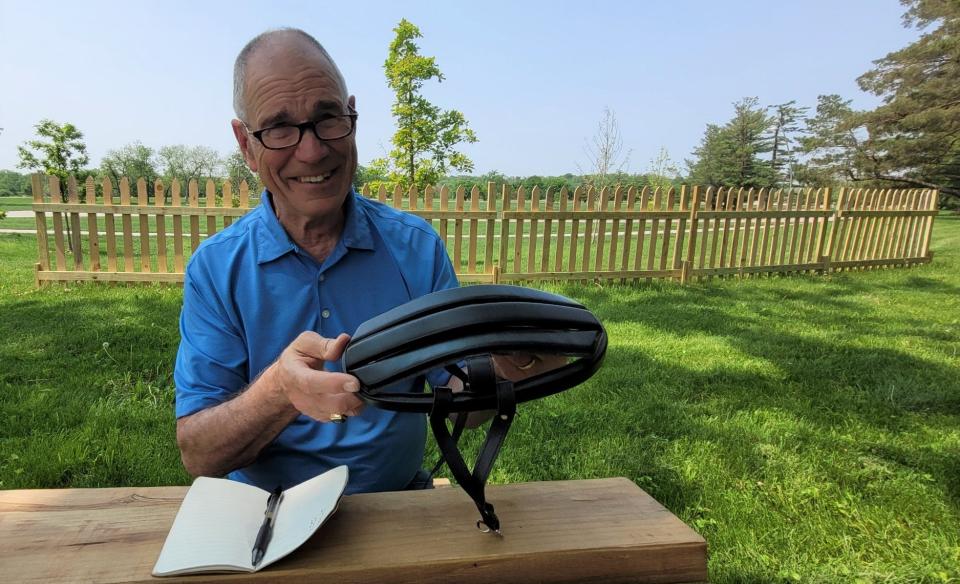
“There were weekly Sunday articles about training, getting your bike in shape, all the other parts to it,” Voss said of the leadup to the ride. “I think they saw the potential right away.”
But there was no recognition of the historic moment when that first ride began. There wasn't even a ceremonial tire dip in the Missouri River ― a tradition started the following year, when the ride set out from Council Bluffs.
“People did come and stand around and look to see what was going on,” said Shirley Williams, now 88, of Cedar Falls, who took photos of Karras, Kaul and her then-15-year-old son, Kent, who rode that first day. “I think they just thought, ‘There’s a bunch of crazy people going on a bike ride.’”
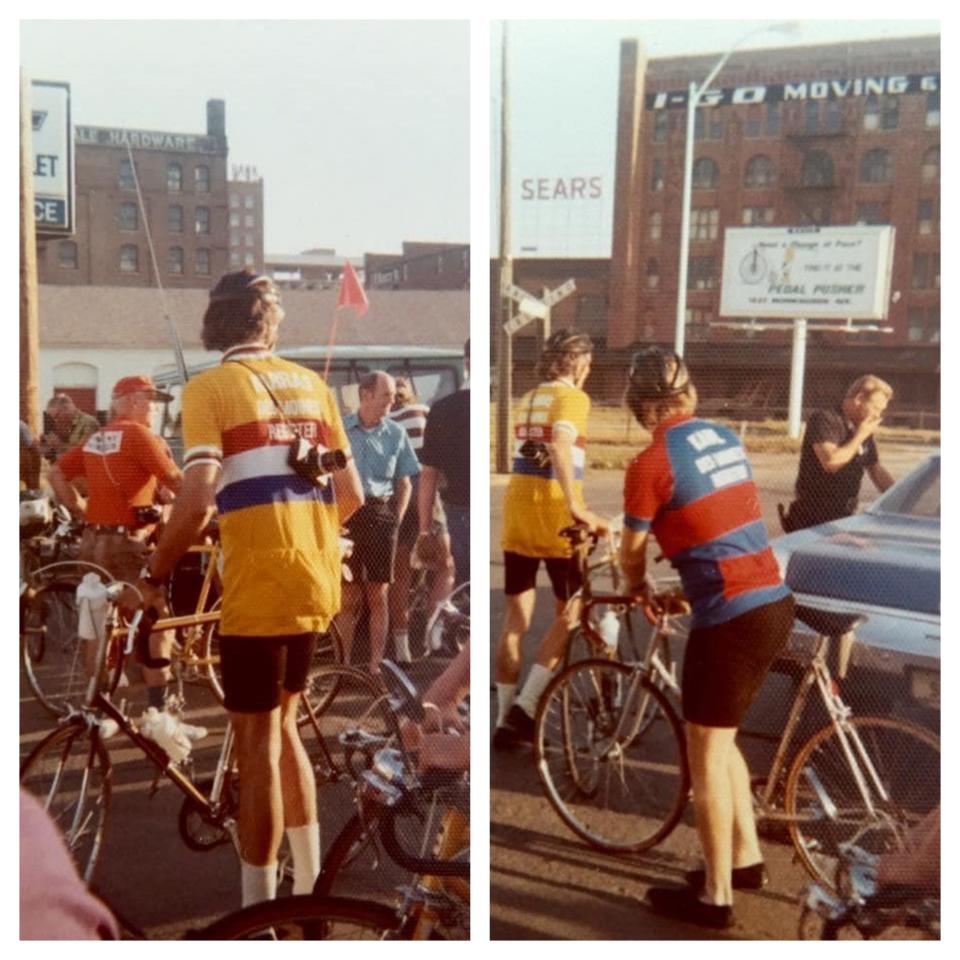
“Nobody was excited at all. The public was not talking about it,” recalled Chuck Offenburger, a 26-year-old Register reporter at the time.
“Then the first day they get up there on Saturday, they ride on Sunday and they write their stories. It’s in the Monday paper and the state went crazy,” said Offenburger, who went on to become the paper's Iowa columnist and main RAGBRAI cheerleader until his retirement in 1998.
RAGBRAI provided an escape from stresses of the day
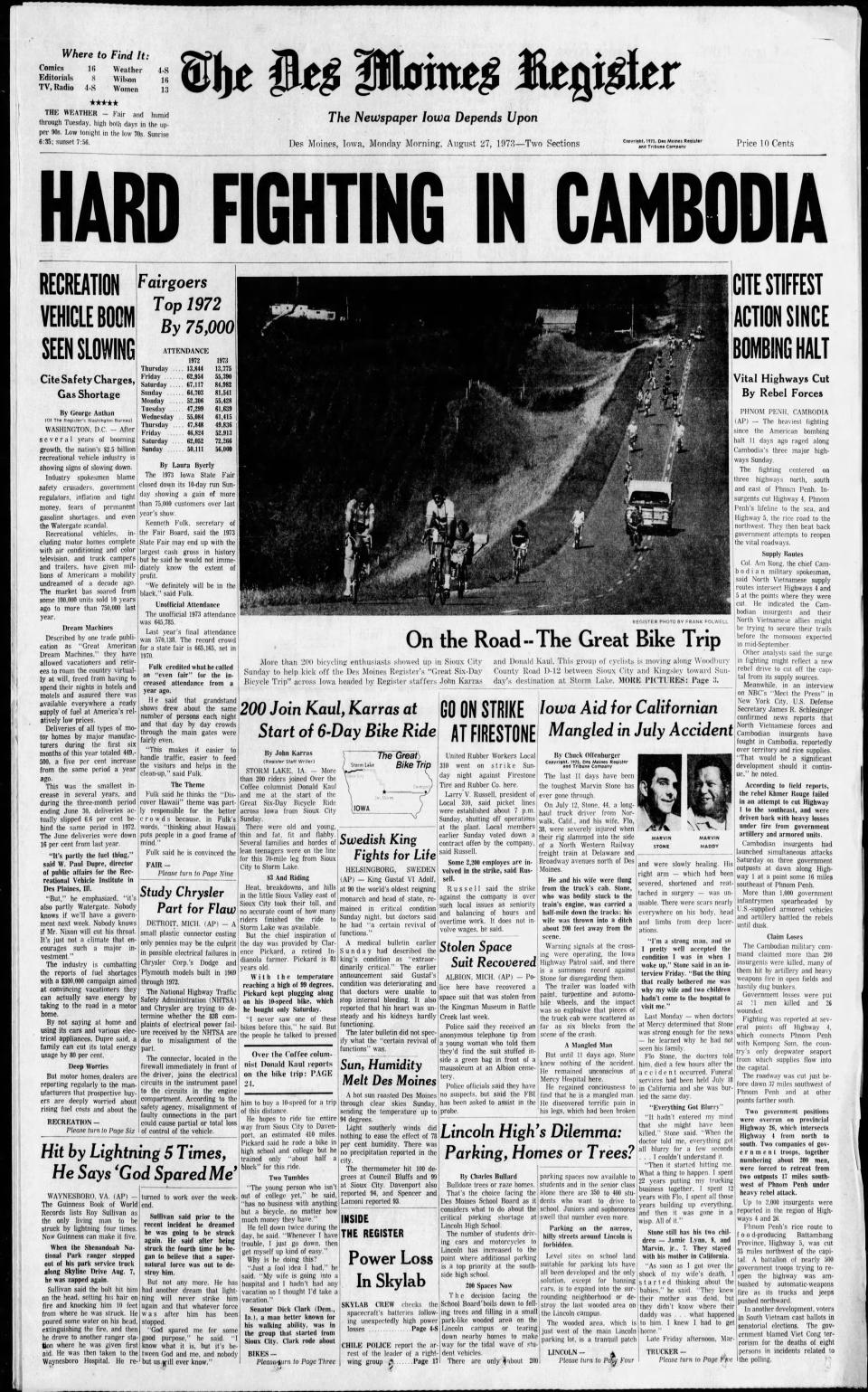
The initial ride came at a stressful time for the United States. On the same Register front page with Karras' account of the first day was a story about heavy American bombing of North Vietnamese supply routes in Cambodia.
“That’s part of RAGBRAI’s appeal,” said Leo Landis, curator at the State Historical Society of Iowa. “So you get this thing that is an escape.”
It also was a challenge. With temperatures above 100 degrees for five days, the week of the ride was the hottest stretch in nearly two decades, Karras wrote in 1992.
More: Fan favorite Hairball plays in Ames for the 50th anniversary of RAGBRAI
But along the way, it became what he and Kaul intended when they dreamed up the idea: a celebration of all things Iowa. Passing through crossroads towns, the riders were greeted by residents eager to offer their hospitality, handing out glasses of lemonade, cookies and sandwiches. Almost everything was free that first year.
Brothers Steve and Bill Early of Harlan were teens playing hooky from school when they rode that week. They spent a total of just $20 between them.
“I remember pulling into (one town) and they were just handing out ham sandwiches,” Steve Early said.
Clarence Pickard: On the first ride, a star is born

There also were some genuine Iowa characters among the riders on the initial journey ― none more so than Clarence Pickard, an 83-year-old retired farmer from Indianola who rode a used 10-speed women’s bike he bought the day before the ride. He learned to shift the gears only after Karras noticed him struggling up hills and gave him a lesson.
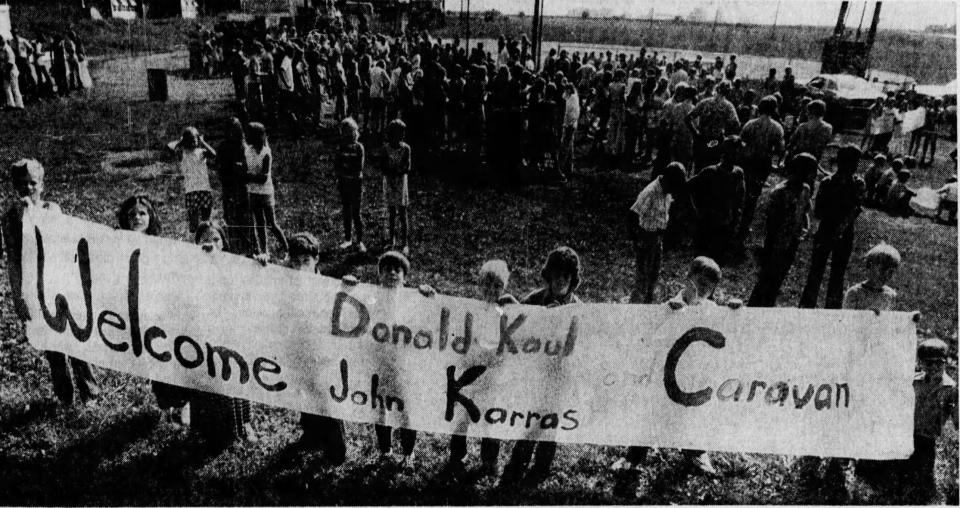
Wearing a pith helmet and a long-sleeve, button-down shirt on top of a wool sweater, Pickard somehow completed the entire ride, one of 120 people to do so. The stories Karras, Kaul and Offenburger wrote about him captivated readers and created enough momentum for a second ride across Iowa the following year.
“The phones just went crazy on the switchboard at the Register,” Offenburger said. “By Wednesday when they came in here it was nuts. Clarence Pickard was a folk hero. To a degree, so were Kaul and Karras.”
One of those readers was Harry Smith. Now the well-known NBC TV journalist behind "Sundays with Harry" on the weekend edition of "Today," he was a student at Central College in Pella in the early 1970s and read the Register every morning, especially Kaul's "Over the Coffee" column.
“When this thing was first conjured up, it seemed to me both ridiculous and brilliant,” Smith said.
In trying times, RAGBRAI becomes 'a huge pick-me-up for Iowa'
Whether absurd or inspired, RAGBRAI has rolled on, river to river, through wars, recessions and natural disasters, canceled only once, in 2020, the first year of the COVID-19 pandemic.
Iowa Bicycle Coalition Executive Director Mark Wyatt said RAGBRAI works because it allows people to see things at a “human scale.”
“Not a car scale, not a movie, not a video,” Wyatt said. “A real, with-my-own-eyes ... time to check things out and look at what makes Iowa so beautiful.”
RAGBRAI fits into Americans' desires to escape, explore and be free, said Landis, the state historian.
An event that has drawn people from around the globe to Iowa for what has been dubbed the world's largest rolling party also became something to celebrate even in the most trying times.
One of those trying times was the Great Flood of 1993, which caused $15 billion in damage and 50 deaths across the Midwest. More than 10,000 central Iowa residents were evacuated when the Raccoon River Basin flooded, and downtown Des Moines' Court Avenue was submerged. The city lost power and water service on July 11, 1993, two weeks before the ride, and it would be a month before life returned to normal.
Offenburger, who ran the ride with Karras at the time, said the Register came close to canceling.
“We finally were at a day where we said, ‘We have to make a decision,’” Offenburger said. “(Register Publisher Charles Edwards) decided we’re going to go for it. The people of Iowa need something fun. It was a huge pick-me-up for Iowa.”
The ride also has helped communities celebrate their resilience, as when a 2012 Counting Crows concert staged by Cedar Rapids for overnight riders also served to mark the community's long but successful recovery from devastating floods in 2008.
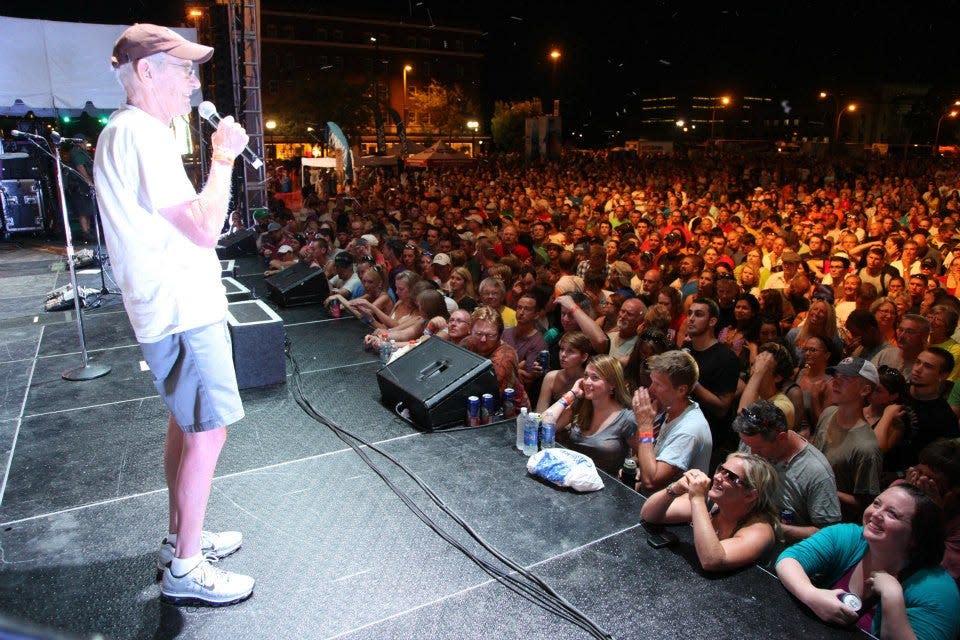
RAGBRAI rider numbers keep growing, and this year will set record
As the years went on, RAGBRAI's fame grew, albeit mostly by word of mouth.
“I don’t think it’s recognized around the country,” Smith said. “We Midwesterners and we who love Iowa, it has a special place in our hearts. But it’s not like everybody knows about it."
But in bicycling circles, RAGBRAI is known around the world. And even if RAGBRAI isn't a household word across America, it's been around long enough ― more than a quarter of the state’s history, Bill Early noted ― that its fan base has spread far and wide.
“If you get out of the state and you’re talking to anybody and they find out you’re from Iowa, there’s a good chance that you’re going to get a RAGBRAI story thrown at you,” Steve Early said.
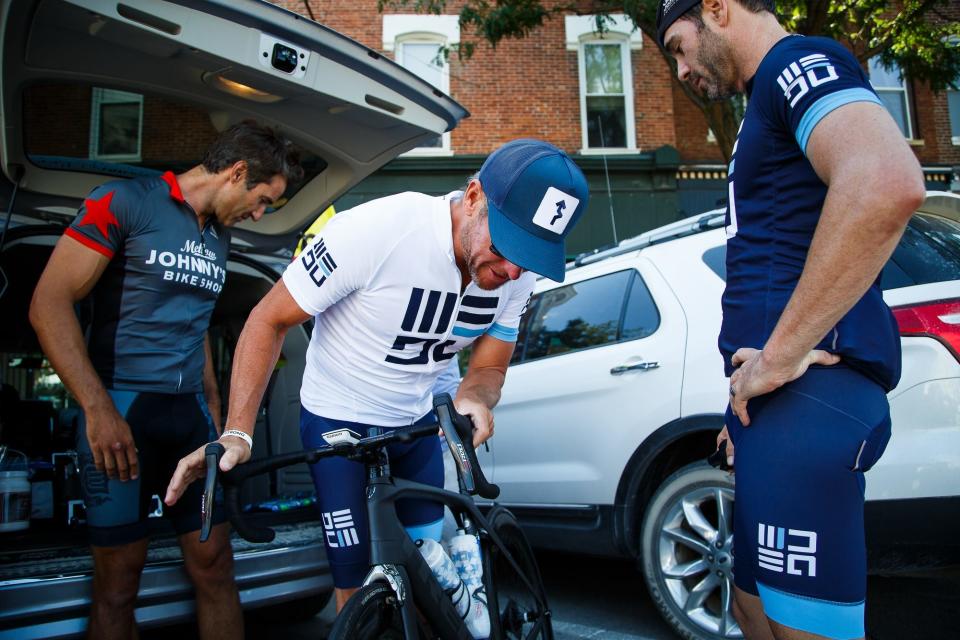
Today, thousands of visitors from the biggest cities in the U.S. and nations as far-flung as Japan, Germany and Australia travel to Iowa for the ride.
It also has drawn its share of celebrities. From 2006 to 2008, Lance Armstrong, then at the peak of his fame as a champion cyclist, rode RAGBRAI annually, and has been back repeatedly in the years since. And, cross-pollenating with another Iowa institution, presidential candidates campaigning ahead of the Iowa Caucuses have ridden portions of the ride.
Amid the hoopla, longtime riders and RAGBRAI fans wonder if something has been lost as the ride has gained professional management and Iowa has become more urban, though perhaps not urbane.
“Fifty years ago Iowa was a smaller state. It was loaded with more people and lots of burgs and there were more nooks and crannies for quirkiness back in the day," said Smith, who rode a few days of the ride in 1997 and may ride again this year for one of his Sunday segments.
In the 1970s, 42% of Iowa’s 2 million residents lived in rural areas, according to the State Historical Society of Iowa. By 2020, that proportion fell to 36.8%, said Gary Krob, coordinator of the State Data Center at the State Library of Iowa.
Rural Iowa has been losing population for a century as people have headed to cities for jobs. That accelerated in the 1980s, when farm prices suddenly cratered, leaving farmers across Iowa saddled with large debt loads. After that, many small towns boarded up, according to Landis and Offenburger.
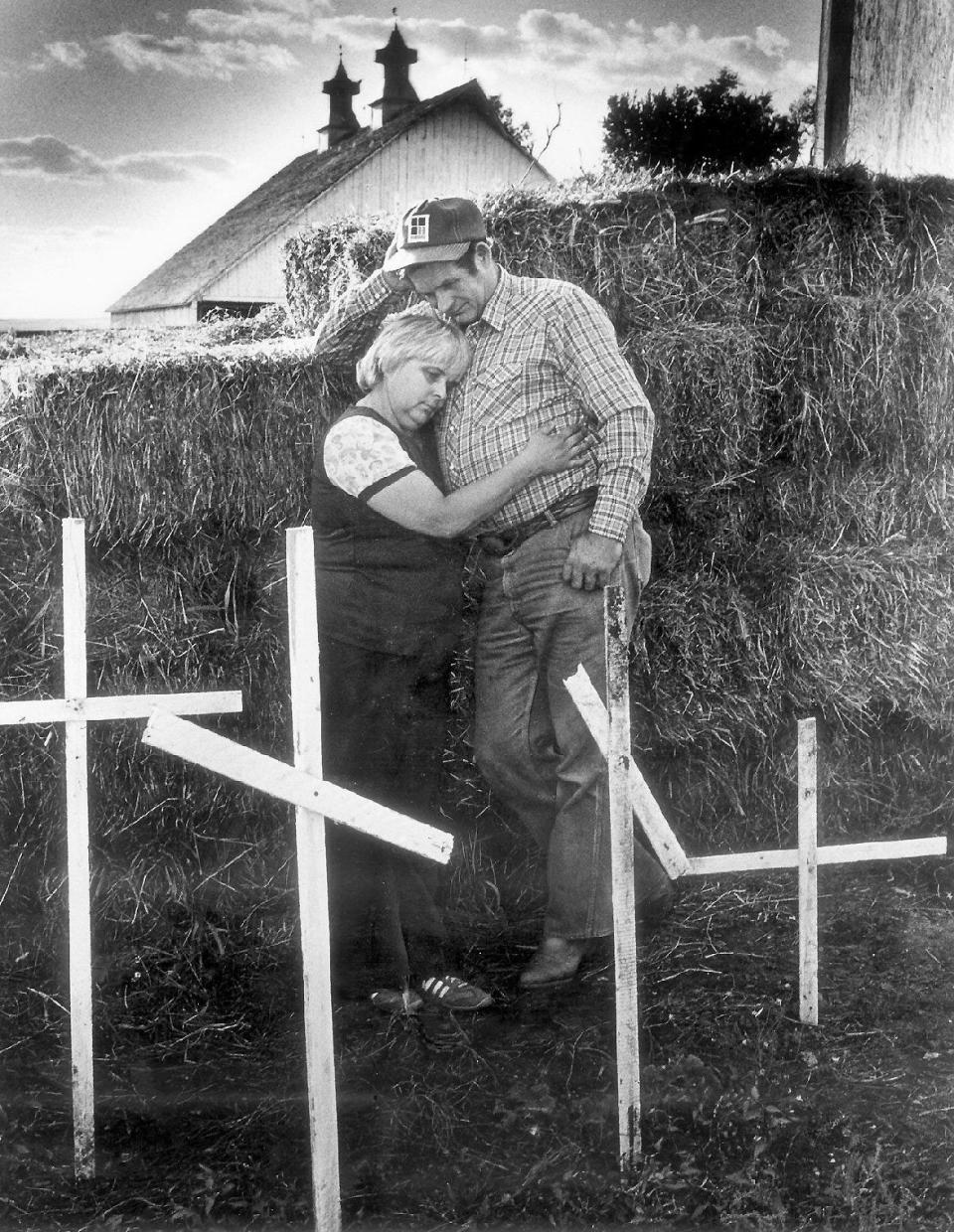
“The county-seat towns are still as strong today as they were back then; in some cases even stronger,” Offenburger said. “But rural Iowa has lost so much population in that time, with so much migration to the suburbs and the cities, that it’s a different place out there than when this bike ride started.”
While rural Iowa shrank, the ride grew. About 2,700 riders started the Second Annual Great Bicycle Ride Across Iowa, a 1,250% increase from 1973.
Karras fretted as the third ride ― the first dubbed RAGBRAI ― approached in 1975. “The ride is most enjoyable in the smaller towns, but the smaller towns have the skimpier accommodations,” he wrote that March, when organizers tried to cap ride participation at 3,000. “Thus if the ride gets too large we won’t be able to stay in the smaller towns and everyone will have less of a good time.”
But RAGBRAI kept expanding its ridership, and the towns adapted. Gradually the cap rose to 5,000, then 10,000 and 12,000 riders, until the cap was dropped.
Last year more than 18,000 riders registered, including riders with single-day passes. When registration for the 50th anniversary ride closed on May 15, more than 28,000 had registered, including single-day riders.
Thousands more unregistered riders will likely join this week. Cities and towns are preparing for an astonishing 40,000 to 60,000 people. It's certain this will be the most-well attended RAGBRAI ever.
So where does RAGBRAI go from here? It's a question that's top of mind for RAGBRAI Ride Director Matt Phippen. He wonders whether smaller communities will be able to support RAGBRAI if it grows more.
“With the amount of people that are brand new riders and coming this year and trying it for the first time, they’re going to fall in love with it like everybody else does,” Phippen said. “My worry is these people that come for 50, love it and say, ‘I’m never going to miss this again.'"
In spontaneous moments along the way, 'authentic is out there'
RAGBRAI over the years has proven not to be about how many people ride it, or where they come from or even where they're going.
Instead, it's a celebration of moments along the way, such as in 2021, when the tiny town of Lytton invited riders to join an attempt to set a world record for the most people participating in goat yoga. The record wasn't broken, but the scenes of riders cuddling baby goats generated a wave of charm that, after the ride, inspired a donation that allowed the town to build a new fire station.
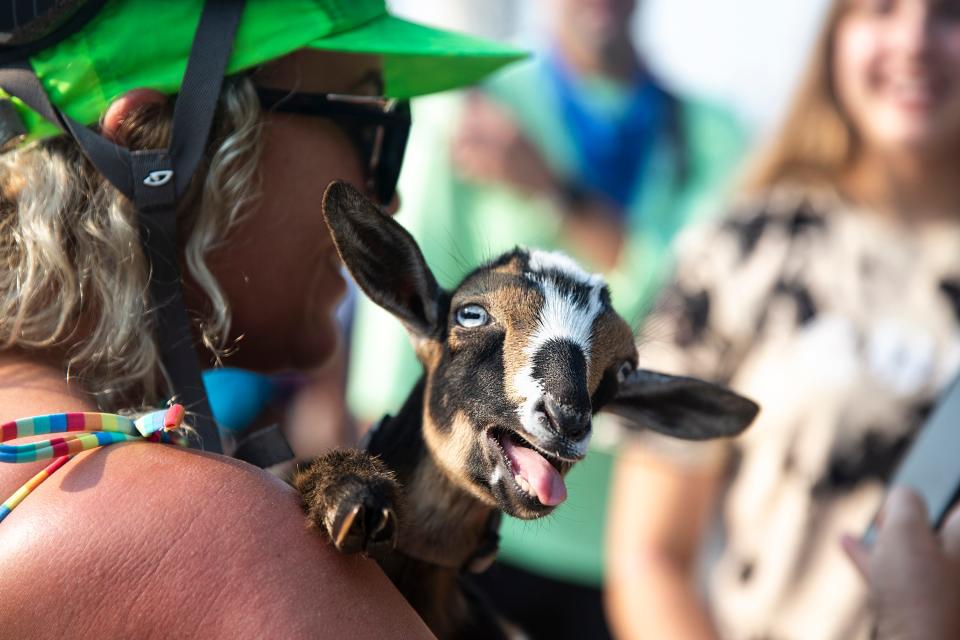
And then there was the day in 2022 when Lance Hamann near Anthon set up some tables on his farm, offering riders lunch in exchange for a free-will donation to his church. It just so happened his property was at the highest point on the ride, and before the end of the day, thousands of weary cyclists had accepted his hospitality.
They climbed around on a goofy giant bike sculpture with hay-roll wheels, munched on brats and sweet corn and kept the farmers who staffed an ask-a-farmer tent busy with all sorts of questions about agriculture. The Woodstock-like spontaneity of the crowd left the church's coffers full and Hamann with the memory of a lifetime.
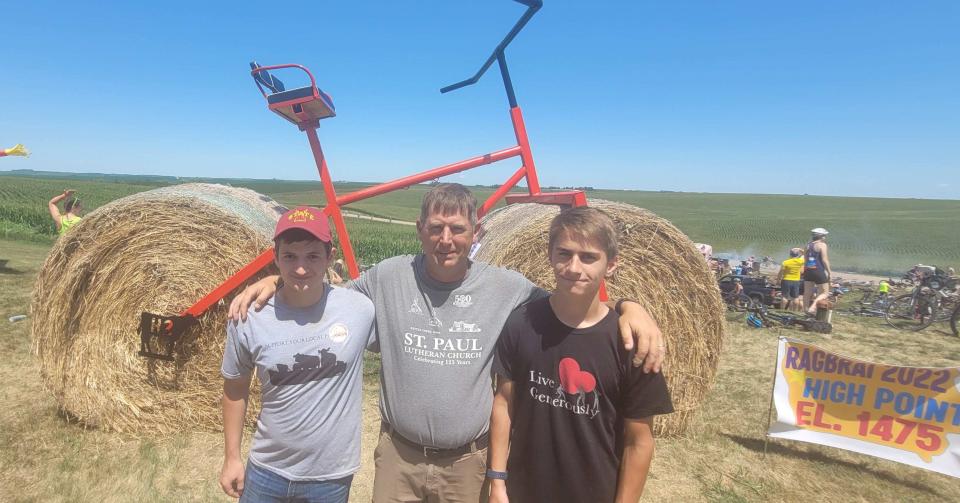
It's those kinds of moments that inspired the Register's 50th anniversary RAGBRAI documentary, "Shift," which explores the motivations and life-changing experiences of three individuals on the 2022 ride, and a couple preparing to host the ride in their small town.
“You have to intentionally seek out authentic Iowa on RAGBRAI now," Landis said. "But you will casually encounter authentic Iowa still.”
Voss rides with a group of 12 people and camps in backyards throughout the week.
“I love meeting people and interesting folks that sit around in their backyard and talk about what they do. Authentic is out there.”
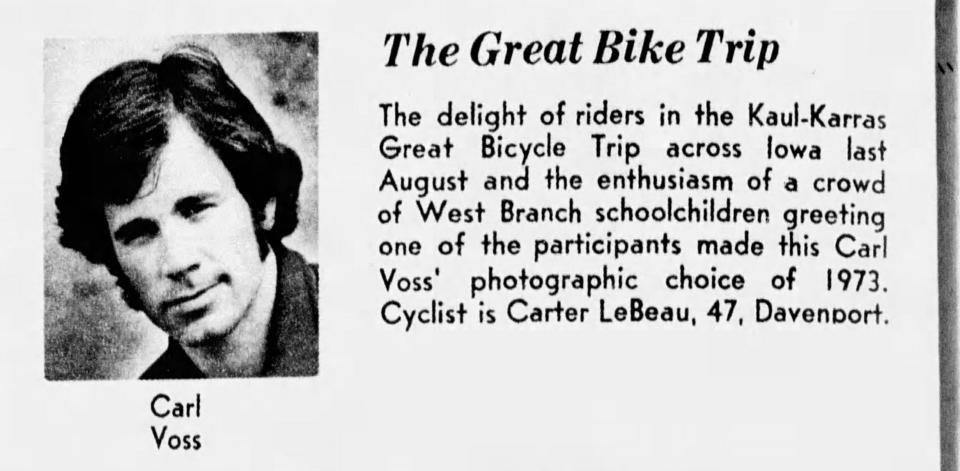
“For that week in Iowa, there really is some e pluribus unum,” Smith said. “There really is, out of many one. There you are at 11 o’clock in the morning line dancing with a beer in your hand. Most days in my life, that doesn’t happen.”
Kaul and Karras started RAGBRAI in the midst of the Vietnam War, when the country felt sharply divided. RAGBRAI endures because it celebrates communities at a time when society again is deeply split, Smith said.

“I think at the end of the day, the notion of riding a bike from one river to another river, it’s insanity, but it’s also beautiful,” Smith said. “In its own way it’s about whimsy, for which so few of us have time anymore. “
Philip Joens is riding his 18th RAGBRAI. He has completed the river-to-river trek six times. He covers retail, real estate and RAGBRAI for the Des Moines Register and can be reached at 515-284-8184 at pjoens@registermedia.com or on Twitter @Philip_Joens.
This article originally appeared on Des Moines Register: RAGBRAI's record crowd of riders will see glimpses of 'authentic Iowa'

